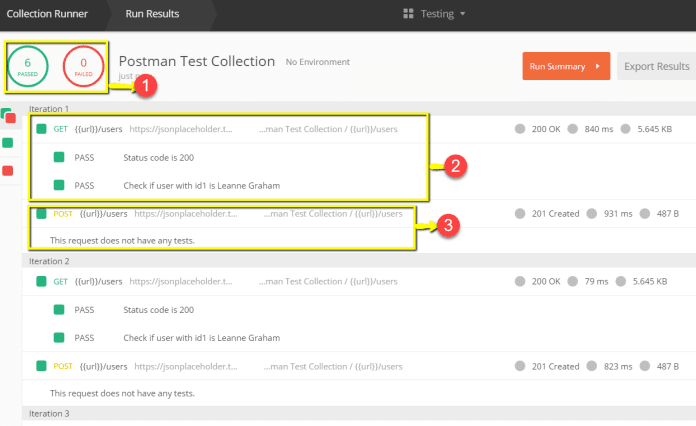Postman is an HTTP client for API testing. HTTP clients test sending requests from the client to the server and receiving a response from the server.
Postman helps testers to develop and build entertaining servers for APIs. For example, you can use Postman reporting to test how the API registers and deletes data about the user on the server as a newer application or to generate HTML report from JSON.
With this, we do not mean that Postman is a tool exclusively for web professionals. It might bring benefits for anyone who has to interact with an API. It provides a range of features to support us in organizing requests, making and automating tests, maintaining teams in sync, and creating API Mocks. All this is free in the basic version and provides two options of payment to improve the features and enable team members to synchronize, create unlimited mock materials, monitor the environment, etc.
How is API functioning?
An API (application stimulator) is an interface between two applications or the software component for exchanging data from a server. Imagine sitting in a restaurant and selecting a menu meal. You’re placing your order, and a waiter is coming up. The waiter sends your order into the kitchen, and there magic happens, then finally the ready meal will appear in front of your eyes. When you ask a question, the API sends information to the system and processes it before returning a response.
What types of APIs exist?
Within the system, the software components can be interrelated and used in private. Open and public is another option, in which case external users or programs can obtain information that they can use in their own programs to enhance their own.
The APIs have endless possibilities. Any business that uses more than one software or solution can benefit from its wide-ranging functionality in API management. There is an option for API for a company that wishes, for example, to link to its social media pages, for example, Twitter, Linkedin, Facebook, or Instagram. If a manager wants to install a translator in its systems to broaden its reach of customers, there is also an API.
How to test APIs?
A software product’s business logic drives API testing. Integrative API testing is a type of integration testing that identifies errors in the interaction of system modules and systems. For testing, there are special tools that allow you to send data input in a query and verify that the output data is accurate. One of these tools that does that is Postman.
By using the Postman test report, you can:
- compose and send HTTP requests to the API;
- create collections (a set of consecutive queries) and query folders to reduce testing time;
- change request parameters (e.g., authorization keys and URLs);
- change the environment for questions (e.g., on the test bench, locally, or on the server);
- add checkpoints when calling the API (fixing the moment of data transmission);
- conduct automated testing of the API on a collection of requests using Collection Runner.
Postman methods
The RESTful architecture is most commonly used in API operations. In this architecture, there are four standard methods for requesting servers over HTTP:
- POST – creating an object and sending data to the server;
- GET – receiving information from the server;
- PUT – object update;
- DELETE – deleting an object.
Using Postman to create collections
Click on the folder icon to open a form for creating the collection. Fill in the name you want for your collection and click “Create.” Done! Collection created! Now let’s add some requests and folders to your collection.
Creating folders
Click the ellipsis icon to open the Collection submenu. Click “Add Folder” to add a new folder. Type the name of the folder you just created and click “Create” to save it. You can use this feature to better organize your requests according to the elements or functionality your API provides.
Creating request
To create a request, you type the address of the API you are documenting into the address bar and select the HTTP method used in the request. To save this request to the collection, click “Save.” A form will appear, where you can fill in the name of the request and state in which Collection and Folder you wish to save it. Finally, click on the “Save” button to save the request.
Conclusion
Postman is unquestionably a tool that becomes crucial as soon as you use it for the first time. As a development aid, it enables the team to keep an updated collection of all your service calls or a collection that allows the integration with third-party APIs to be tested quickly.
In addition, the possibility of creating a JSON to HTML report allows the team to version the collection in the version control system and make it a collaborative document that helps all team members have their collection updated immediately.
From now on, Windows, OSX, and Linux (beta) have been running native Postman applications so that any developer could benefit. For example, the Postman user can be a developer checking the operation of an API to develop on it or an operator who is performing monitoring tasks on an API.

I needed to thank you for this excellent read!! I definitely enjoyed every little bit of it. I have you bookmarked to check out new stuff you postpost
I gave cbd gummies a try payment the first previously, and I’m amazed! They tasted excessive and provided a be under the impression that of calmness and relaxation. My stress melted away, and I slept better too. These gummies are a game-changer for me, and I highly recommend them to anyone seeking appropriate emphasis relief and better sleep.sleep.